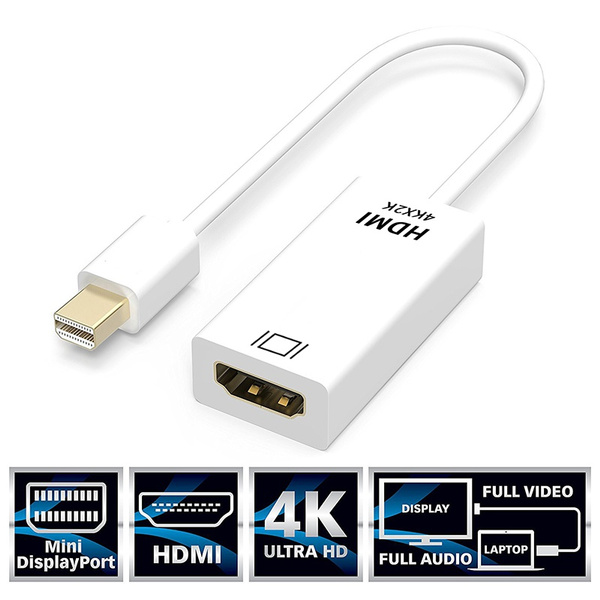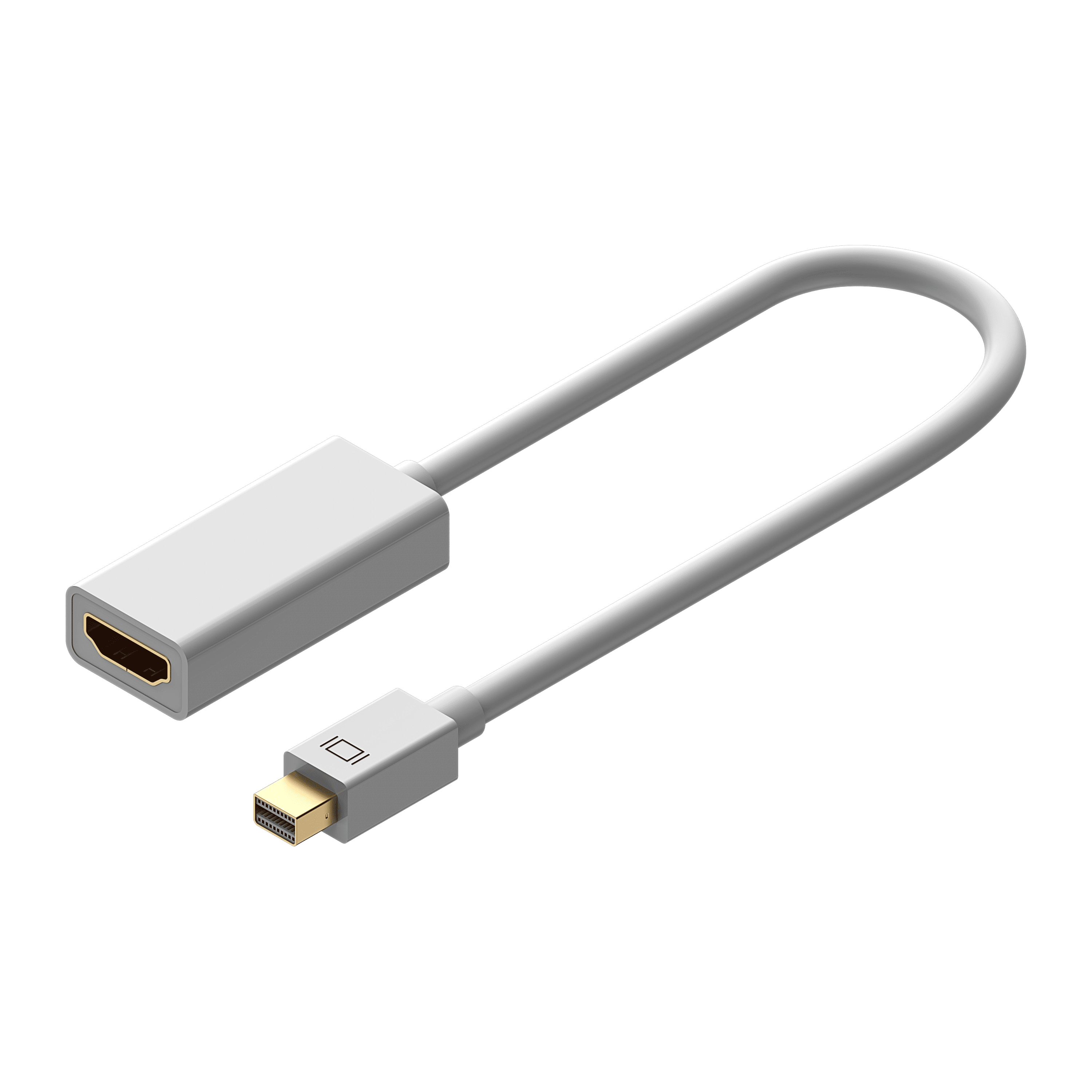
- USING THUNDERBOLT TO HDMI ADAPTER UPGRADE
- USING THUNDERBOLT TO HDMI ADAPTER FULL
- USING THUNDERBOLT TO HDMI ADAPTER SOFTWARE
- USING THUNDERBOLT TO HDMI ADAPTER PLUS
The only thing you could do with it would be to attach some Thunderbolt 3 peripheral to the display. The bottom line is that TB3's additional bandwidth won't help you for driving a single display. They support DisplayPort MST, which is the ability to split a single DisplayPort interface to drive multiple independent displays so long as their total bandwidth requirement falls within what that single interface can provide, but that's the opposite of what you need. The catch here is that Intel GPUs do not support DisplayPort link aggregation, which is the ability to combine the bandwidth of multiple DisplayPort interfaces in order to drive a single display.
USING THUNDERBOLT TO HDMI ADAPTER PLUS
This provides TWO DisplayPort interfaces, plus USB 3.x, plus power.

USING THUNDERBOLT TO HDMI ADAPTER FULL
This gives you a full DisplayPort interface, but no USB data or power at all. And you'd get power either way if the display supports providing it.

In this setup, you'd get either a full DisplayPort interface plus USB 2.0 data, or half of a DisplayPort interface plus USB 3.0 data.

In terms of cable options, these would be your choices worth considering: But let's establish some foundational information here first. And actually you might encounter another limitation here that prevents you from fully utilizing its additional bandwidth if you're trying to use it to drive a single display. Currys (UK) currently have an offer on it for £579 (Samsung price £779!) so a bit of a Thunderbolt 3 is only better if you actually need the capabilities it provides, otherwise it is not inherently "better" or "purer", so you definitely shouldn't base your decision on that. If anyone has any questions about the monitor then let me know. So thanks your help & advice, it was really useful. Re: the Thunderbolt connection, there are 2 (type C) connections - one outputs 15W, the other 85W. Once that was done all was well - the 2 USB ports on the monitor behave as if you've connected your peripherals direct to the XPS.
USING THUNDERBOLT TO HDMI ADAPTER SOFTWARE
I was a bit confused at first why the monitor's (type A) USB ports only allowed me to charge things instead of tranfer data but then I found the XPS Thunderbolt software that required me to authorise (or accept) the connection. This does of course change the XPS screen display to 3440 X 1440 too which isn't ideal on a 13" screen but since I'm looking at simply duplicating the XPS screen on my monitor it's not an issue.Īs it's a Thunderbolt monitor it acts as a USB hub. Initially the monitor displayed the XPS 3200 X 1800 resolution (hence black bars down either side) but changing the XPS display resolution to 3440 X 1440 (which became an option when monitor was connected) allowed full 21:9 display at that resolution. In summary, it's awesome! I'm glad I went for a Thunderbolt monitor.Ĭonnecting was easy, used included Thunderbolt cable & monitor sprung into life. I opted for the Samsung 34" 21:9 Ultrawide 3440 X 1440 (100 Hz refresh with Thunderbolt 3 connection, model LC34J791WTUXEN). So as promised, here's my initial experiences with my & new monitor.
USING THUNDERBOLT TO HDMI ADAPTER UPGRADE
There's a certain amount of future-proofing here as I may upgrade my laptop in a year or 2, but want the screen to work now with my XPS 13, even if I don't get the full advertised specs as advertised. So my question is - what is the best method of connection for each monitor & what resolution/refresh rate would I achieve? Resolution is more important to me than refresh rate as I'm not a gamer. I'm assuming here though that a 'pure' thunderbolt connection would be best - perhaps that's not true! I'm swayed towards the 34" model due to the Thunderbolt support, but the 49" would be nice. Connect laptop to 34" monitor using a Thunderbolt 3 cable (different to a USB-C cable I appreciate!) from laptop to monitor Thunderbolt ports.Ģ. Connect laptop to either monitor using a Thunderbolt 3 to DP cable.ģ. Connect laptop to either monitor using a Thunderbolt 3 to HDMI cable. Responses to questions similar to mine suggest (I think!) that it's possible for both screens, but methods of connection will result in either a reduction in resolution or refresh rate (or both!).ġ. I've narrowed my choice down to 2 models, both Samsung:ģ4" 3440 X 1440 (100 Hz refresh) with Thunderbolt 3 connection I'm looking at connecting an ultra-wide display to my (with Intel HD 620 graphics & Thunderbolt 3 port).

Hi all, I've seen similar posts to this but still not 100% of the answer so any help appreciated!


 0 kommentar(er)
0 kommentar(er)
